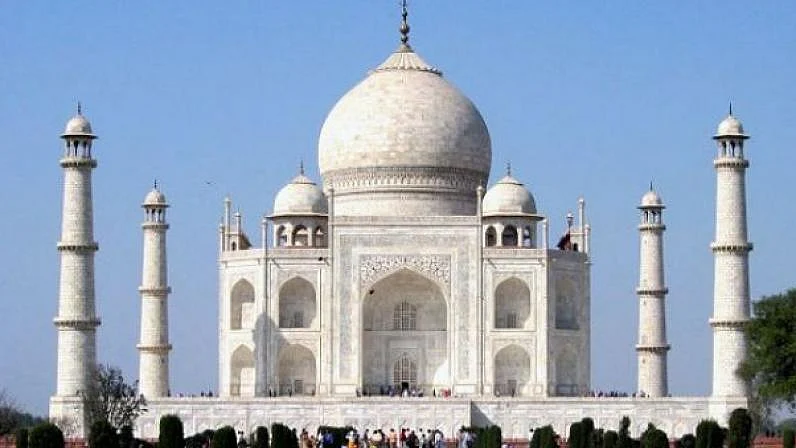Supreme Court: If Taj Mahal goes, authorities will not get a second chance
The apex court had earlier slammed the Centre, Uttar Pradesh government and TTZ authority for their failure to restore the pristine glory of Taj Mahal

There will be no "second chance" to preserve the Taj Mahal, the Supreme Court said today, asking the authorities to take a larger perspective on issues of pollution and green cover to prepare a vision document on protecting the monument.
The top court, while observing that Taj Mahal would "of course be the centre piece" of the matters to be considered, said other issues like vehicular traffic, pollution from the industries operating in the Taj Trapezium Zone (TTZ) and the water level of river Yamuna, should also be looked into while preparing the vision document.
The TTZ is an area of about 10,400 sq km spread over the districts of Agra, Firozabad, Mathura, Hathras and Etah in Uttar Pradesh and the Bharatpur district of Rajasthan.
"If the Taj Mahal goes once, you will not get a second chance," a bench of Justices Madan B Lokur, S Abdul Nazeer and Deepak Gupta told the project coordinator, who is involved in the process of preparing the vision document.
Nadkarni said that the Centre has communicated to the Uttar Pradesh government to send a proposal to declare Agra a ‘heritage city’. He said the Archaeological Survey of India (ASI) was in the process of preparing a heritage plan for the Taj which would be filed with the UNESCO in three months.
The bench said the authorities would have to look into several issues to protect the Taj Mahal and sought to know about the green cover, the number of industries operating in the area and the hotels and restaurants there.
Additional Solicitor General (ASG) Tushar Mehta and advocate Aishwarya Bhati, representing the Uttar Pradesh government, said the School of Planning and Architecture in Delhi was preparing a vision document. Besides looking into issue of protection of Taj Mahal, they were also considering a larger comprehensive plan to deal with all these issues.
ASG A N S Nadkarni, appearing for the Centre, said that in pursuance to the apex court's order, they have received suggestions from expert bodies like the Aga Khan Foundation, the Indian National Trust for Art and Cultural Heritage (INTACH) and the International Council on Monuments and Sites (ICOMOS) in this regard.
Nadkarni said that the Centre has communicated to the Uttar Pradesh government to send a proposal to declare Agra a 'heritage city'. He said the Archaeological Survey of India (ASI) was in the process of preparing a heritage plan for the Taj which would be filed with the UNESCO in three months.
The UP government told the court that they would respond to the Centre's communication on declaring Agra as a heritage city within a month.
At the outset, environmentalist M C Mehta, the petitioner in the case relating to the protection of Taj Mahal, told the court that green cover in the area has reduced and there were encroachments in and outside the Yamuna flood plains there.
He referred to the apex court's 1996 order in the case and said several industries have come up in the area, with many of them operating beyond their capacity.
Mehta said as per the 1996 order, there were 511 industries in the area out of which the court had then said it would deal with 292 industries separately.
ASG Tushar Mehta told the bench that the School of Planning and Architecture would suggest steps to be taken in a time-bound manner to deal with the issues and the petitioner should also give his suggestions.
When he said the vision document would cover "wider aspects", the bench sought to know about the industries there.
When Bhati said that 1,167 polluting industries existed in the area now, the bench said "things have changed from what was told to this court in 1996. There were 511 industries then and now it is 1,167. Has all this being taken into consideration?" The project coordinator told the bench that they were looking into all the aspects and verifying data on number of industries as the list given to them was "incorrect".
"If information given to you is incorrect, the vision document would be incorrect. This is the problem," the court observed.
The coordinator also told the court that forest cover was only around six per cent and open density in the area has reduced, which was a cause of major concern.
The bench told the coordinator to do the work related to vision document "fearlessly" and said in case of any assistance, he could approach the apex court. "You can come to the Supreme Court in case you want any kind of assistance. You go slowly and steadily so that everything can be worked out," it said.
The bench also said that after finding a solution to the problems in the area, the government would have to implement the solutions. "If they (government) do not do it, then court is there," the bench said and posted the matter for hearing on September 25.
The bench, which has been monitoring development in the TTZ area to protect the Taj Mahal, asked the petitioner to give his suggestions to the expert body within a week. The top court had earlier slammed the Centre, Uttar Pradesh government and TTZ authority for their failure to restore the pristine glory of Taj Mahal.
Follow us on: Facebook, Twitter, Google News, Instagram
Join our official telegram channel (@nationalherald) and stay updated with the latest headlines
